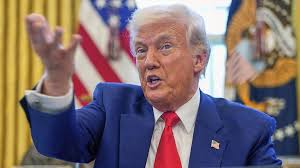Trump and China: Navigating the Friction in Relations

Introduction: The Significance of U.S.-China Relations
The relationship between the United States and China has long been a cornerstone of global politics and economics. As two of the world’s largest economies, their interactions are pivotal not just for their respective populations, but for global trade, security, and environmental strategies. Former President Donald Trump’s tenure was marked by increasing tensions with China, and understanding this dynamic is crucial given recent geopolitical developments.
Events and Policies During Trump’s Presidency
From 2017 to 2021, Donald Trump adopted a confrontational approach towards China. His administration implemented a series of tariffs, leading to a trade war aimed at correcting significant trade imbalances and addressing intellectual property theft allegations. In 2018, Trump imposed tariffs on over $300 billion worth of Chinese goods, prompting retaliatory tariffs from China. This trade confrontation ignited discussions about the repercussions on both economies, with businesses and consumers feeling the crunch.
Rhetorical Escalation and the Pandemic Response
Trump’s rhetoric against China intensified, particularly during the COVID-19 pandemic. He frequently referred to the virus as the “Chinese Virus,” which critics argued fueled xenophobia and racism. Nonetheless, his insistence on holding China accountable for the virus and blaming it for the economic downturn echoed his administration’s larger narrative of viewing China as a strategic rival rather than a cooperative partner.
Recent Developments: Post-Presidency
Since leaving office, Trump’s influence on U.S.-China relations remains palpable. Many Republican leaders align themselves with his tough-on-China stance, advocating for sanctions and trade policies that echo his approach. Recent congressional actions, such as the bipartisan efforts to restrict Chinese investment in sensitive technologies, signal a continuation of tensions, irrespective of the current administration’s foreign policy strategies.
Conclusion: The Road Ahead
Looking to the future, the implications of Trump’s policies towards China will influence not only U.S.-China relations but also the broader geopolitical landscape. There are ongoing debates about the effectiveness of tariffs and whether dialogue is a more beneficial approach. The U.S. may continue to fortify alliances with other nations to counterbalance China’s rising influence while attempting to engage in constructively competitive practices. For many observers, the trajectory of these relations will significantly impact global trade norms, security pacts, and climate initiatives.









